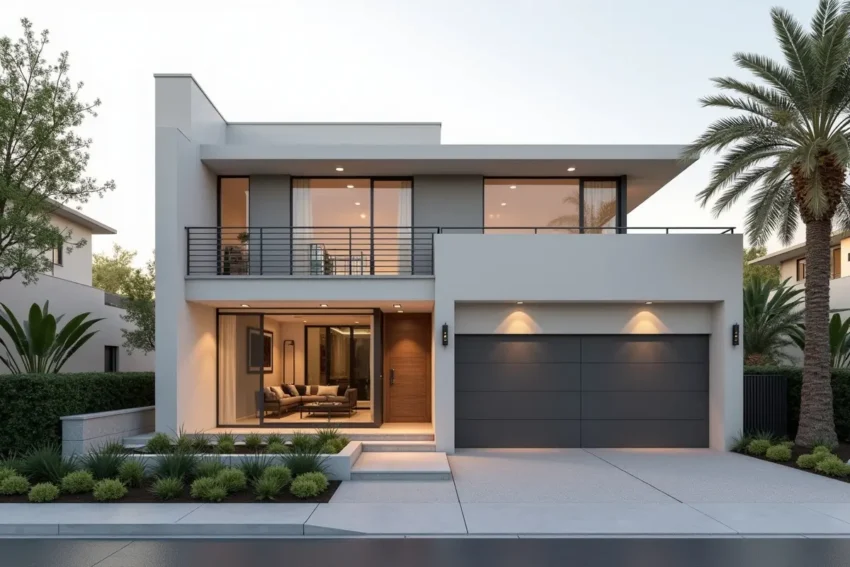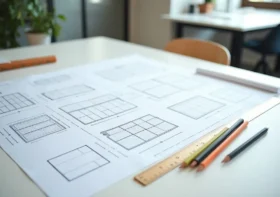Casement Windows Are Proof That Utility Can Be Beautiful

Architects and homeowners love to talk about kitchens, flooring, and bold paint choices. Yet the one element that silently shapes the character of a home often gets ignored: the windows. They determine how light falls, how air moves, and how rooms feel. Among the different styles available, casement windows stand out for proving that utility does not have to come at the expense of beauty.
Contents
- 1 Why Casement Windows Feel Different
- 2 The Relationship Between Airflow and Architecture
- 3 Clean Lines for Modern Aesthetics
- 4 Utility That Does Not Compromise Style
- 5 Energy Efficiency Built In
- 6 Safety and Security Without Bulk
- 7 The Practicality of Cleaning and Maintenance
- 8 The Case for Local Craftsmanship
- 9 The Role of Windows in Emotional Comfort
- 10 Longevity Is Its Own Form of Elegance
- 11 Why Architects Favor Them
- 12 The Cultural Shift Toward Utility as Beauty
- 13 Final Thoughts
Why Casement Windows Feel Different
Unlike sliding windows, casement windows hinge at the side and open outward. The movement feels purposeful, like a door into the sky. This simple design creates an entirely different experience with air and light. It is not just function. It is theater. The act of turning a crank and feeling the whole pane swing open is small, but it transforms how a space connects with the outdoors.
The Relationship Between Airflow and Architecture
Casement windows catch breezes in ways that fixed or sliding windows cannot. Their outward swing acts like a scoop, pulling air into a room and redirecting it across spaces. For homes in climates with hot summers or stuffy winters, this natural ventilation reduces the need for mechanical cooling. The design is simple, but the impact is profound. Airflow is invisible architecture, and casement windows make it intentional.
Clean Lines for Modern Aesthetics
Minimalism is not about having less. It is about making every detail count. Casement windows embody this principle with their slim frames and unobstructed views. No meeting rails break the glass. The result is clean lines and maximum visibility. For designers seeking modern aesthetics, these windows deliver the kind of quiet beauty that ages well.
Utility That Does Not Compromise Style
Some design elements demand a trade-off between practicality and appearance. Casement windows reject that compromise. They lock tightly against their frames, providing excellent insulation and energy efficiency. Yet they remain elegant, blending seamlessly into traditional, transitional, and contemporary homes. They prove that style and function can occupy the same frame without tension.
Energy Efficiency Built In
Energy is no longer just an expense. It is a cultural value. Families care about lowering bills, but they also care about lowering environmental impact. Casement windows close tighter than most alternatives, making them especially effective at reducing drafts and heat loss.
According to Natural Resources Canada, windows and doors can account for up to 25 percent of total home energy loss. Choosing designs that seal well matters for both household budgets and collective responsibility.
Safety and Security Without Bulk
Security features often clash with design. Heavy bars and thick locks feel intrusive. Casement windows solve this by using locks embedded in their frames. When closed, they are difficult to pry open from the outside. Homeowners get safety without sacrificing aesthetics. Utility once again doubles as beauty.
The Practicality of Cleaning and Maintenance
Form should not punish function. Casement windows open wide, allowing both sides of the glass to be cleaned from indoors. For upper floors, this detail removes the need for ladders or professional cleaning crews. Practicality becomes a design feature, making life easier without drawing attention to itself.
The Case for Local Craftsmanship
Design is always tethered to context. A window that works in California might fail in Toronto. Canadian winters and humid summers punish materials in ways that glossy catalogs never show. This is why casement windows from local manufacturers matter. They are built for the realities of Canadian climate, not just for showroom aesthetics. True craftsmanship isn’t about chasing inspiration boards. It is about creating something that performs beautifully where it actually lives.
The Role of Windows in Emotional Comfort
The design of a home is not just visual. It is emotional. Windows frame how we see the outside world, but they also frame how we feel inside. A well-placed casement window brings light to a reading nook or a breeze into a kitchen at the right moment. These small, repeated experiences shape the atmosphere of daily life. Utility becomes beauty because it becomes memory.
Longevity Is Its Own Form of Elegance
Design that lasts is more beautiful than design that fades. Casement windows, with their durable construction and straightforward mechanics, stand up to time better than many alternatives. Their longevity reduces waste and replacement costs. True elegance is not about trends. It is about endurance.
Why Architects Favor Them
Architects often choose casement windows not just for their look but for how they function within broader designs. Large casements can replace entire walls of glass, framing landscapes like art. Smaller casements add rhythm to facades. Their versatility makes them a favorite in projects that demand both discipline and creativity.
The Cultural Shift Toward Utility as Beauty
The last decade has shifted design culture. People want homes that are not just showpieces but living spaces. Sustainability, durability, and function are valued as much as aesthetics. Casement windows fit this ethos perfectly. They are not trendy. They are timeless. They remind us that the most beautiful design is often the most useful.
Final Thoughts
Casement windows prove a simple truth: beauty is not the opposite of utility. They bring air, light, security, and efficiency together in a form that feels effortless. For designers and homeowners alike, they are reminders that elegance lives in details that work. Sometimes the most functional choice is also the most beautiful.



